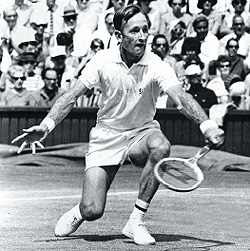BGB.CA
Rookie
If they are both using wood, my money is on Laver or Rosewall (or for that matter Budge) - definitely NOT Federer or Sampras. It seems you are more interested in comparing racquet and string technologies, rather than the abilities of the players themselves. FYI, playing with wood requires greater skill.
Racquets have nothing to do with it, it's because todays athletes are faster, stronger, more powerful, and have more endurance than in the past. Knowledge of human kinetics, athletic training and nutrition have gone ahead light years since Laver's time. If you give the player from the past these advantages and let them train with it their entire career then you could argue that they would win, but saying a guy from the 1960's could beat todays greatest players is like saying that the fastest 100m runner from the 60's could outrun Usain Bolt.
Laver is listed as 5'9" and 150 lbs, how many top 50 nevermind top 10 players are that size today? Compare him with Sampras who was 6'1" 175lbs and had the vertical jump of a basketball player or a player like Nadal who seems to be able to sprint at full speed and hurl himself at the ball hour after hour and the 1960's players look like children playing.
I've watched video of Laver playing and while his skill and pedigree are undeniable the power and the athleticism is nowhere near the level of todays top tennis players. They've even done tests to compare serve speeds with wood and graphite racquets and there is less than a 5% difference, I think Tennis Magazine published one of these tests w/Phillipoussis in it. If we can say for certain that the technology in this element of the game is negligable so then why when watching video of past players does the ball appear to be going so much slower on the serve?
No matter how great of a champion someone is time and human physiology are going to catch up to them. I'm sure even Laver himself accepts this you guys should too.




